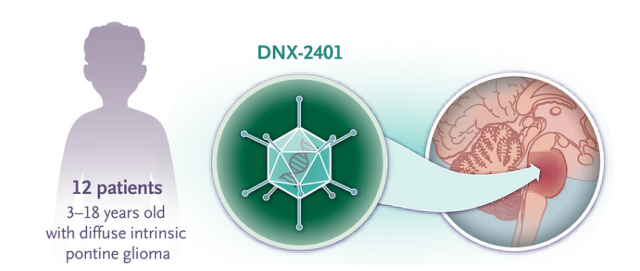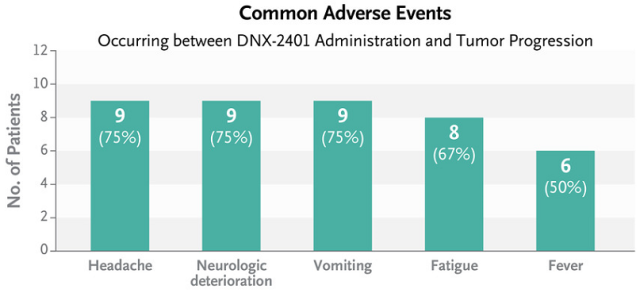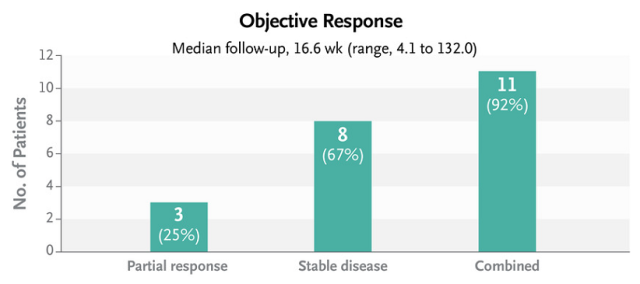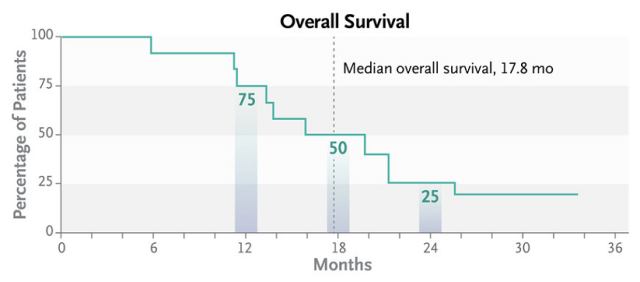Oncolytic virus for fatal brain tumor in children prolongs survival by 50%
- Normal Liver Cells Found to Promote Cancer Metastasis to the Liver
- Nearly 80% Complete Remission: Breakthrough in ADC Anti-Tumor Treatment
- Vaccination Against Common Diseases May Prevent Dementia!
- New Alzheimer’s Disease (AD) Diagnosis and Staging Criteria
- Breakthrough in Alzheimer’s Disease: New Nasal Spray Halts Cognitive Decline by Targeting Toxic Protein
- Can the Tap Water at the Paris Olympics be Drunk Directly?
NEJM: Oncolytic virus for fatal brain tumor in children prolongs survival by 50%
- Should China be held legally responsible for the US’s $18 trillion COVID losses?
- CT Radiation Exposure Linked to Blood Cancer in Children and Adolescents
- FDA has mandated a top-level black box warning for all marketed CAR-T therapies
- Can people with high blood pressure eat peanuts?
- What is the difference between dopamine and dobutamine?
- How long can the patient live after heart stent surgery?
NEJM: Oncolytic virus for fatal brain tumor in children prolongs survival by 50%.
Diffuse intrinsic pontine gliomas (DIPGs) are gliomas typically driven by histone H3 mutations and are the leading cause of brain tumor-related death in children.
Treatment options are limited due to the location, invasiveness, and aggressiveness of this tumor.
Despite the transient benefit of standard radiotherapy, patient outcomes were poor, with progressive neurological deterioration, with median survival of less than 1 year, 2-year survival rates of less than 10%, and 5-year survival rates of less than 1%.
Previously, the New England Journal of Medicine (NEJM) published a phase 1 clinical trial of herpes simplex virus type 1-based oncolytic virus ( HSV-1-G207 ) in the treatment of high-grade glioma in children, showing that intratumoral injection alone Oncolytic virus and radiotherapy provide remission in relapsed or progressive pediatric high-grade glioma patients, and oncolytic virus converts patients’ cold tumors to hot tumors with acceptable adverse effects.
For children with diffuse intrinsic pontine glioma (DIPG) , clinical data on oncolytic virus therapy are lacking.
On June 30, 2022, the New England Journal of Medicine (NEJM) published a Phase 1 clinical trial paper titled: Oncolytic DNX-2401 Virus for Pediatric Diffuse Intrinsic Pontine Glioma .
This phase 1 clinical trial of 12 children aged 3-18 years with diffuse intrinsic pontine glioma (DIPG) showed that chemotherapy followed by infusion of the oncolytic virus DNX-2401 into the brain resulted in median survival of patients The period reached 17.8 months, an extension of about 50%.

In the treatment of solid tumors, oncolytic viruses are a very promising method. Oncolytic viruses target cancer cells without affecting normal cells.
By replicating in cancer cells, they cause the lysis of cancer cells; Tumor viruses can further trigger a systemic immune response to kill cancer cells.
Currently, oncolytic viruses used for research include herpes simplex virus, adenovirus, vaccinia virus, measles virus, and so on.
DNX-2401 (tasadenoturev) , is an adenovirus-based oncolytic virus therapy developed by DNAtrix .
Previous clinical trials in adult patients with recurrent malignant glioma have shown that intratumoral injection of DNX-2401 can trigger immune cell infiltration in the tumor microenvironment, induce anti-tumor immune responses, and prolong survival in some patients.


Preclinical studies have also shown that DNX-2401 has direct oncolytic activity on DIPG cells, elicits anti-tumor immune responses, and shows synergistic effects with radiotherapy.
In this clinical trial, the research team conducted a phase 1 clinical trial of DNX-2401 in 12 pediatric patients (ages 3-18 years ) with diffuse intrinsic pontine glioma (DIPG) , which was infused into the tumor. After oncolytic virus, standard radiotherapy was administered.
The primary objective of this Phase 1 clinical trial is to evaluate the safety and adverse events of DNX-2401.
Secondary objectives are to assess the effect of DNX-2401 on overall survival and quality of life, to determine the proportion of patients with an objective response, and to collect tumor biopsies and peripheral blood samples for molecular characterization of DIPG and related studies of anti-tumor immune responses .

Eleven of 12 newly diagnosed DIPG patients aged 3-18 received DNX-2401 oncolytic virus at a dose of 1 × 10E10 virus particles and the last 8 patients at a dose of 1 × 10E10 virus particles received subsequent radiotherapy.
Patient adverse events included headache, nausea, vomiting, and fatigue, with 1 patient each developing hemiplegia and tetraplegia.

The median survival of 12 patients was 17.8 months (5.9 months-33.5 months) , 11 of whom received chemotherapy after oncolytic virus infusion (1 died for follow-up chemotherapy) , and 11 of these 11 patients received chemotherapy after oncolytic virus infusion , 3 patients had partial remission, and 8 patients had stable disease.
Magnetic resonance imaging in nine showed reduced tumor volume.

The median survival of 17.8 months was significantly higher than the median survival of 12 months prior to associated therapy.
At the time of publication of the paper, two patients were still alive, one of whom had a tumor progression-free survival of 38 months.

In addition, the study, which examined tumor samples and peripheral blood samples obtained from autopsy of one of the patients, showed that oncolytic virus treatment altered the tumor microenvironment and T-cell repertoire.
Overall, this Phase 1 clinical trial showed that intratumoral infusion of the oncolytic virus DNX-2401 followed by radiation therapy in pediatric patients with DIPG resulted in changes in T cell activity in patients and in some patients of tumor shrinkage or stable disease, prolonging the median survival of patients by about 50%.
Reference :
https://www.nejm.org/doi/full/10.1056/NEJMoa2202028?query=featured_home
The screenshot in the article comes from the New England Journal of Medicine
NEJM: Oncolytic virus for fatal brain tumor in children prolongs survival by 50%
(source:internet, reference only)
Disclaimer of medicaltrend.org
Important Note: The information provided is for informational purposes only and should not be considered as medical advice.



